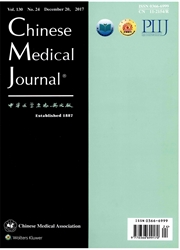

 中文摘要:
中文摘要:
Primary immune thrombocytopenia (ITP) is the most common hemorrhagic disorder characterized by isolated thrombocytopenia in the absence of conditions known to cause thrombocytopenia.The incidence rate of ITP is similar in males and females;the incidence was significantly higher among patients older than 60 years.1 The clinical manifestation of bleeding varies with patient.The severity of bleeding ranges from mild mucocutanous bleeding (petechiae and ecchymoses) to life-threatening hemorrhages (intracranial or gastrointestinal bleeding);some patients have no bleeding manifestations.Fatal and major nonfatal hemorrhages were extremely higher in patients older than 60 years old.2
 英文摘要:
英文摘要:
Primary immune thrombocytopenia (ITP) is the most common hemorrhagic disorder characterized byisolated thrombocytopenia in the absence of conditions known to cause thrombocytopenia. The incidence rate of ITP is similar in males and females; the incidence was significantly higher among patients older than 60 years) The clinical manifestation of bleeding varies with patient. The severity of bleeding ranges from mild mucocutanous bleeding (petechiae and ecchymoses) to life-threatening hemorrhages (intracranial or gastrointestinal bleeding); some patients have no bleeding manifestations. Fatal and major nonfatal hemorrhages were extremely higher in patients older than 60 years old.2 The thrombocytopenia in ITP has been traditionally thought to be caused by the production of autoantibodyies targeting platelet antigens. Autoantibodies attach to the platelets and are destructed by macrophages in the reticuloendothelial system. Understanding of the mechanisms of thrombocytopenia in ITP has greatly expanded in recent years. The pathogenesis of ITP is heterogeneous and complex. The thrombocytopenia in ITP is caused not only by increased platelet destruction but also by impaired platelet production. The advances in the understanding of ITP have led to the development of a novel nonimmunologic therapeutic approach by stimulating platelet production and even revised guidelines in the diagnosis and treatment of ITE3 In the process of exploring the pathogenesis of ITP, the researchers from all over the world have done a lot of studies. This review will provide an insight into the pathogenesis-oriented treatment of ITP, mainly focusing on the studies of Chinese researchers.
 同期刊论文项目
同期刊论文项目
 同项目期刊论文
同项目期刊论文
 期刊信息
期刊信息
